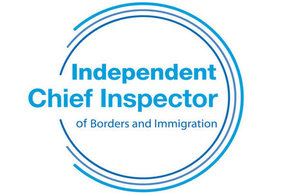The Chief Inspector has published a report on a re-inspection of the Tier 4 curtailment process
A re-inspection of the curtailment process identified further work was required to achieve improvements identified in the original report.

ICIBI logo
David Bolt, Independent Chief Inspector of Borders and Immigration, said:
In 2016, I began re-inspecting areas that had I had previously inspected. I see this as important not just as a means of checking that the Home Office is implementing my recommendations, but also in helping me to evaluate whether my inspections are having the intended impact.
This re-inspection of the Home Office’s handling of the curtailment, where appropriate, of tier 4 (student) visas confirmed that it had made progress in a number of areas, for example improving communication with sponsors and quality assuring the sifting out of notifications.
However, a good deal more work is required to achieve all of the improvements identified as required in original inspection report, and the Home Office has to ensure that this work is properly prioritised and the necessary resources are made available to deliver these improvements.
My original report recommended that the Home Office should ‘Take the necessary steps to identify and locate those individuals amongst the c.71,000 curtailment not pursued (CNP) cases decided between 1 April 2013 and 31 March 2015 who have remained in the UK illegally, with a view to effecting their removal.’ This was accepted. The figure for those still unaccounted for at the time of the re-inspection had been reduced to 24,995 through a series of data matching exercises. The Home Office response to my re-inspection report notes that this has since been further reduced to c.16,000.
My view remains that the Home Office’s approach lacks sufficient urgency.
I have asked the Home Office to reconsider its original response to the one rejected recommendation. This referred to the publishing of service standards for the curtailment consideration process. At the time of the re-inspection, the size (c.25,000) and age (5 months plus) of the ‘Work in Progress’ (WiP), and the severely scaled back resources allocated to this work, caused me concern.
Allowing the WiP to grow has been a conscious decision based on priorities, and the Home Office has argued that as it knows the size, age and makeup of the WiP, and as there are systems in place to report against it and expedite any urgent cases, it is therefore under control. While I sympathise with the point about resourcing to priorities, I believe the WiP is too large and too far behind, affecting sponsors, students and follow-up actions, and that this would not have been tolerated had published service standards been in place.
Read the report on a re-inspection of the Tier 4 curtailment process, July 2017.